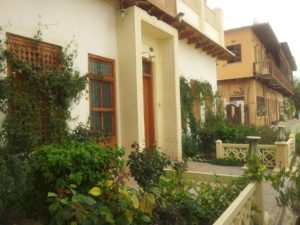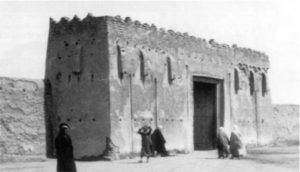A status quo that we all think is true in Kuwait that frustrates me is that there are only three places in the country to go pass the time:the Avenues, Marina Mall (and maybe) 360. While, yes, those are places to go, they’re certainly not the only places, by any stretch of the imagination. Over the past year, a lot of my spare time has been spent in downtown Kuwait City, my favourite part of town, discovering the rich and diverse culture manifested in various places to visit, dine, explore etc. It may sound useless to talk about the outside when we’re all inside, but it’s something for us all to look forward to! So with that in mind, here are some of my personal favourite places I’ve visited (or plan to visit) in Kuwait!
Souk Mubarakiya

Souk Mubarakiya is a heritage open air Souk located in the Center of Downtown Kuwait, and there you can find all sorts of different goods and amenities from the old days. In the market, you can find Kuwait’s first book shop and it’s first school: Mubarakiya school, which is now a museum about the history of Kuwaiti education. The market is divided in 4 delegate markets: weapons (it doesn’t sell weapons now), textiles, fish, and vegetables. To the south side of Mubarakiya, you can find Safat Square, Kuwait’s historic centre during the old days. To the east is Abdullah Salem St (which is a pedestrian street from the Souk to the Square), which is colloquially known as the ‘New Street’, and was the first street in Kuwait to be surfaced in asphalt (hence the name). To the West is Somo Square, which is a collection of modern cafès and restaurants. I’m very briefly going over Mubarakiya, because there really is just so much to talk about and see there for which this paragraph hardly does any justice, so go see it for yourselves!
Behbehani house complex

Remnants and evidence of the old days in Kuwait are particularly hard to come by these days, due to the constant demolition of historic sites across the city. The old mud huts that used to be on every corner are all but gone across modern day Downtown, except at Behbehani house complex. It’s a small collection of old Kuwaiti houses next to one another with a few streets in between them to walk through. It’s the closest we can get to walking through a district of ‘historic Kuwait’, if you wanted to try reliving the old days. It’s located behind the church on Soor Street (next to the Jaber Al-Ahmad Cultural Center) with two great study cafés located in it. However, besides these two cafés, there’s little else going on (unless you’re an architectural enthusiast like I am). It’s a great place to visit (at least once or twice) though!
Mubarak Al-Kabeer Street
Found just round the corner from Mubarakiya, Mubarak Al Kabeer Street hosts a range of up and coming independent coffee shops and restaurants with outdoor seating on the sidewalk for the winter. On the other side of the street, you can find the textile market which has been around since the 70s. This street, along with other areas within Kuwait City, is an epicentre of the commercial transformation of Kuwait, built by young people for young people, which is evident in the atmosphere you get when walking along the street, browsing at all the unique and iconic styles of each shop next to one another. If you’re in Mubarakiya, it’s a short walk in an underground footpath that goes underneath the street onto the restaurant side that takes about 3-4 minutes to traverse.
The gates of Kuwait

If you’ve travelled to Kuwait City, you’ve probably noticed passing a large mud gate as you enter the zone. They’re not at every entrance to Kuwait City- that said, they’re not by any means rare and are worth a look if you’re in the area. There are 4 gates that surround the city in the present day. They are: Al-Maqsab (next to JACC), Jahra (next to the Sheraton), Shamiya, and Al Shaab. Historically, these gates served as the means of entering and leaving Kuwait, back when it was only a small fishing village. All of the gates are found when driving along Soor Street, which is no coincidence, as the street was built where the wall that the gates used to connect to once stood (that’s why it’s called Soor Street, since ‘Soor’ means ‘wall’ in Arabic). Now what is left of the old perimeter of the city is these four gates that can serve as a reminder of how far Kuwait has come since those days.
There’s lots, perhaps more than you may think, to see across all of Kuwait. We’re living in a time where people are becoming more expressive with themselves, as is reflected in new galleries, shops, restaurants and more. The sand is constantly shifting under our feet and you may even find that a shop that you once knew has now been replaced with something new. The city has become more dynamic than ever before- certainly an exciting time to be here. I’ve far from covered everything to see, but what I hope this article does is give you inspiration to go explore for yourselves and find little niche places of your own to enjoy as I have, as we wait for this lockdown to come to its eventual end.


